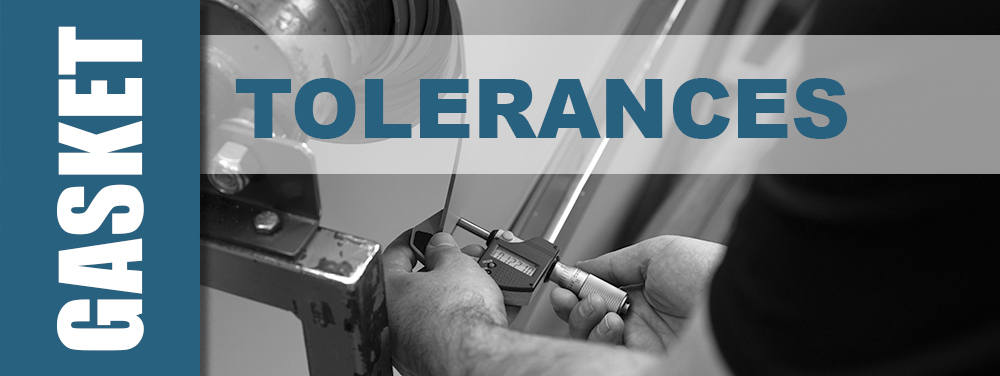August 25, 2025
One of the most important factors in pipeline design and construction is gasket tolerance. If a flange is to seal properly and remain sealed, it must be fitted with a gasket that has a tolerance best suited to the purpose. Before selecting gaskets for your pipeline, it is important to have a good understanding of gasket tolerances and their significance to your gaskets, flanges, the substances you are transporting through your pipeline, and the relevant temperatures and corrosion levels.
What Are Gasket Tolerances?
Every gasket has a specific tolerance determined by its material attributes, shape and dimensions. Tolerance in gaskets describes how precise the production of a gasket needs to be and the acceptable range of variance in dimension. Dimensional accuracy is extremely important in gasket production, but due to the intricacies of the cutting process, slight variations are often unavoidable. The aim is to make these variations so small that they do not affect the efficacy of the gasket. Tolerances are effectively allowances for these variations within a certain acceptable range.
The manufacturing tolerances of gaskets are determined by the end-use for which they are designed, the applicable industry standards, and the materials used in their manufacture. Understanding gasket tolerances is an important part of selecting them for the fit and sealing performance appropriate to each industry and application. Tolerance is usually expressed as a +/- figure. For example, if the specified thickness of a gasket is 0.125” and the tolerance is +/- 0.015”, this means that the finished gasket could have a thickness of either 0.11” or 0.14” and still be acceptable.
How Gasket Tolerances Affect Seal Integrity
Gasket tolerances, including variations in thickness, width and flange surface finish, can have a significant impact on seal integrity. If a gasket falls outside of the tolerance range for a specific gasket or application type, it often has the effect of diminishing the effectiveness and longevity of the seal. For example, if a gasket is too thin, it may not effectively fill the surface irregularities on the face of the flange, which can lead to leaks. If it is too thick, it might end up being overly compressed, which can cause it to fail prematurely. When it comes to factors such as temperature, pressure, and the fluid being dealt with, manufacturers must carefully consider what material to use. Rubber will have a different tolerance in this regard than PTFE, which in turn, would have a different tolerance to
metal, etc.
Selecting Gaskets Based on Tolerances
Manufacturing tolerances are extremely important factors to consider when selecting gaskets. They affect the sealing effectiveness, material selection, and application suitability. Tolerances directly affect a gasket’s ability to create a tight seal. In addition, softer materials may be more suitable for applications with tighter tolerance requirements. It is always important, when choosing gaskets, to know your precise requirements in terms of maximum and minimum thickness, flange compatibility and fluid compatibility.
Gasket Tolerance Testing and Standards
Durlon is one of the most recognizable brands when it comes to sealing solutions such as gaskets. We manufacture a wide variety of gaskets of different types and tolerances, suited for several industrial applications, including metallic, compressed CNA and PTFE products. Contact us for more information about our wide range of gaskets, or to learn more about gasket tolerances and how they affect your pipeline.

